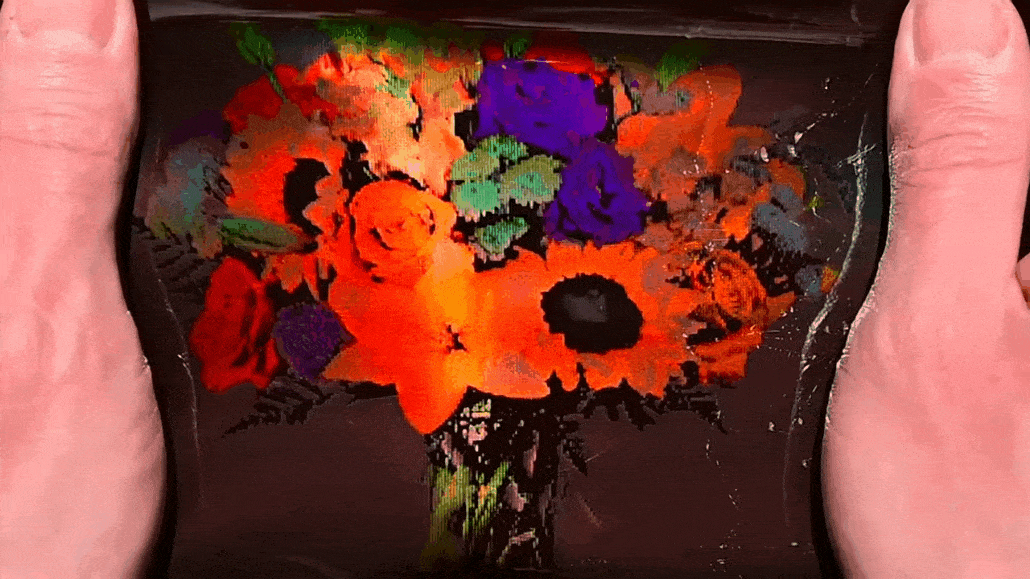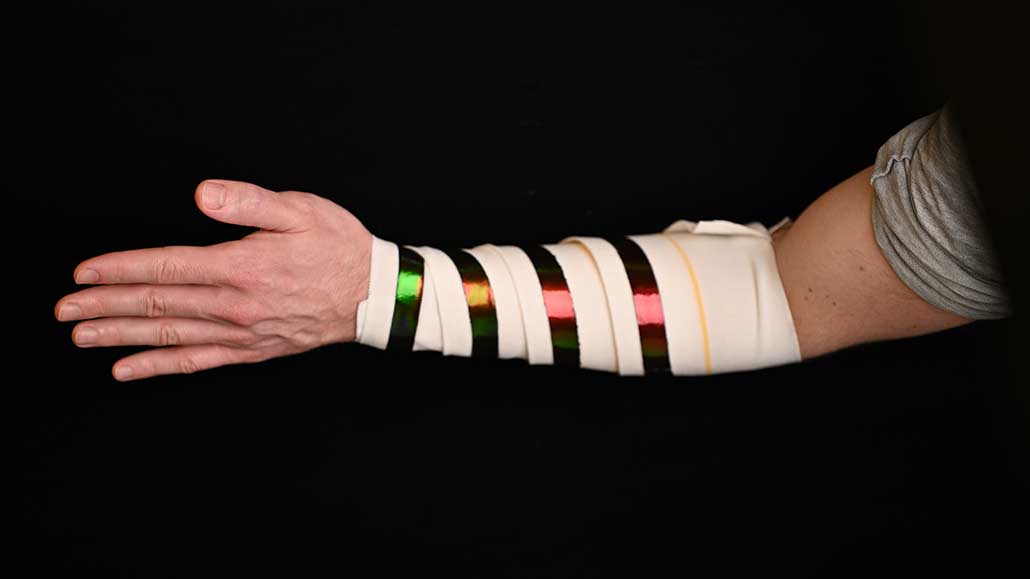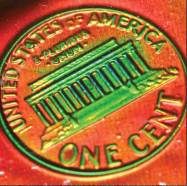These fabrics change color as they stretch
A Nobel-prize-winning invention from more than 100 years ago inspired them

Surprise! Stretching this image of a vase of flowers changes all of the colors. That’s because there’s no ink in this picture. The colors are structural. They come from the way light bounces off of tiny dense spots inside the material.
Massachusetts Institute of Technology
Share this:
- Share via email (Opens in new window) Email
- Click to share on Facebook (Opens in new window) Facebook
- Click to share on X (Opens in new window) X
- Click to share on Pinterest (Opens in new window) Pinterest
- Click to share on Reddit (Opens in new window) Reddit
- Share to Google Classroom (Opens in new window) Google Classroom
- Click to print (Opens in new window) Print
What if your clothing shifted shades from red to green to blue as you moved and stretched? A new fabric could make this possible.
“I want to have a leotard that changes color as I’m running around,” explains graduate student Ben Miller. Miller studies mechanical engineering at the Massachusetts Institute of Technology in Cambridge. He teamed up with mechanical engineer Mathias Kolle and undergraduate student Helen Liu to create the new fabric.
The colors of crayons, paints and clothing usually come from chemicals in dyes and pigments. Those substances reflect one color and absorb others. For instance, the pigments in a red crayon reflect the red light that people’s eyes detect.
The new material instead changes shades due to something known as structural color. It’s caused by an arrangement of surfaces inside a material that reflect only certain hues. For example, a blue butterfly has microscopic layers of scales in its wings. These are arranged so that they bounce back only blue light. All other colors pass through the scales. The angle at which a viewer looks at the wing — or at any structurally colored surface — can alter how much light they see bouncing back. This often causes the colors to shimmer or shine. Structural color “makes a soap bubble shiny. It also makes a lot of animals shiny,” Kolle explains.

Many researchers have found ways to make structurally colored materials. But Miller’s team is the first to create large, detailed, stretchy images using low-cost, widely available equipment.
They didn’t even have to invent anything completely new. They used a technique from more than 100 years ago. “Ben was the smartest person in the world to see this,” Kolle says. The group published its discovery in the September Nature Materials.
Inspired by art and history
Miller didn’t think up the stretchy material all at once. His first spark of inspiration hit in art class. His professor brought in examples of holographic art. Holography is a technique that records the 3-D shape of an object. One way to do this is to etch tiny structures into a plastic film. That creates an image that changes shape depending on how you view it. To Miller, the holograms’ tiny structures looked awfully similar to examples of structural color found in nature.
So Miller began studying the history of holography and stumbled upon the work of Gabriel Lippmann. This French scientist invented a way to make color photographs in 1891. His method resulted in structurally colored photos. Lippman later won the Nobel prize in physics for the process he invented. Unfortunately, the process was not only slow, but also “dangerous and messy,” says Miller. So it never caught on. People found other ways to make color pictures.
Miller realized that modern materials could solve all the problems with Lippman’s process. To create a Lippman photograph, he used a mirror, a piece of holographic film and a projector like ones you might find in a school classroom.
Here’s how it works. A colored image from the projector shines through the layers of the film and onto the mirror. Then it bounces back through the film. These coming-and-going waves of colored light print a pattern of more-dense and less-dense areas into layers of the plastic film. The distance between each dense area matches up perfectly to the wavelength of light that created it. In this way, colors get recorded as tiny structures in the film.

Next, Miller stuck the structurally colored film onto a stretchy material. As it stretches, the dense areas within the film get closer together. That changes the color of light they reflect. An area that starts out red will now appear green and then blue.
If Lippman were alive today, Kolle thinks he might say: “Finally, somebody got this to work.” He’d also probably like their stretchy image of a vase of flowers — flowers were, after all, one of his favorite things to photograph.
Why make stretchy, color-changing stuff?

Many artists and fashion designers would love working with stretchy, color-changing fabrics. Such materials could be useful in sensors, too. That’s because the color reveals how much stress or pressure the material is experiencing.
“It’s really cool,” says Bruno Frka-Petesic. He’s a physicist at the University of Cambridge in England who did not take part in the new research. The researchers managed to print small, micrometer-scale details of structural color over a large area of around half a meter (1.6 feet). And their process costs little, he says.
Structural color can create visual effects that aren’t possible with pigments, adds Rupa Darji. She’s a chemist at BASF Corp. in Tarrytown, N.Y. Darji, too, played no role in creating the new material, although her team develops technologies and products that use structural color. “I think people will be using structural color more widely in the future,” she says. “It’s exciting to think about new colors for coatings or cosmetics or just about anything!”
This is one in a series presenting news on technology and innovation, made possible with generous support from the Lemelson Foundation.






